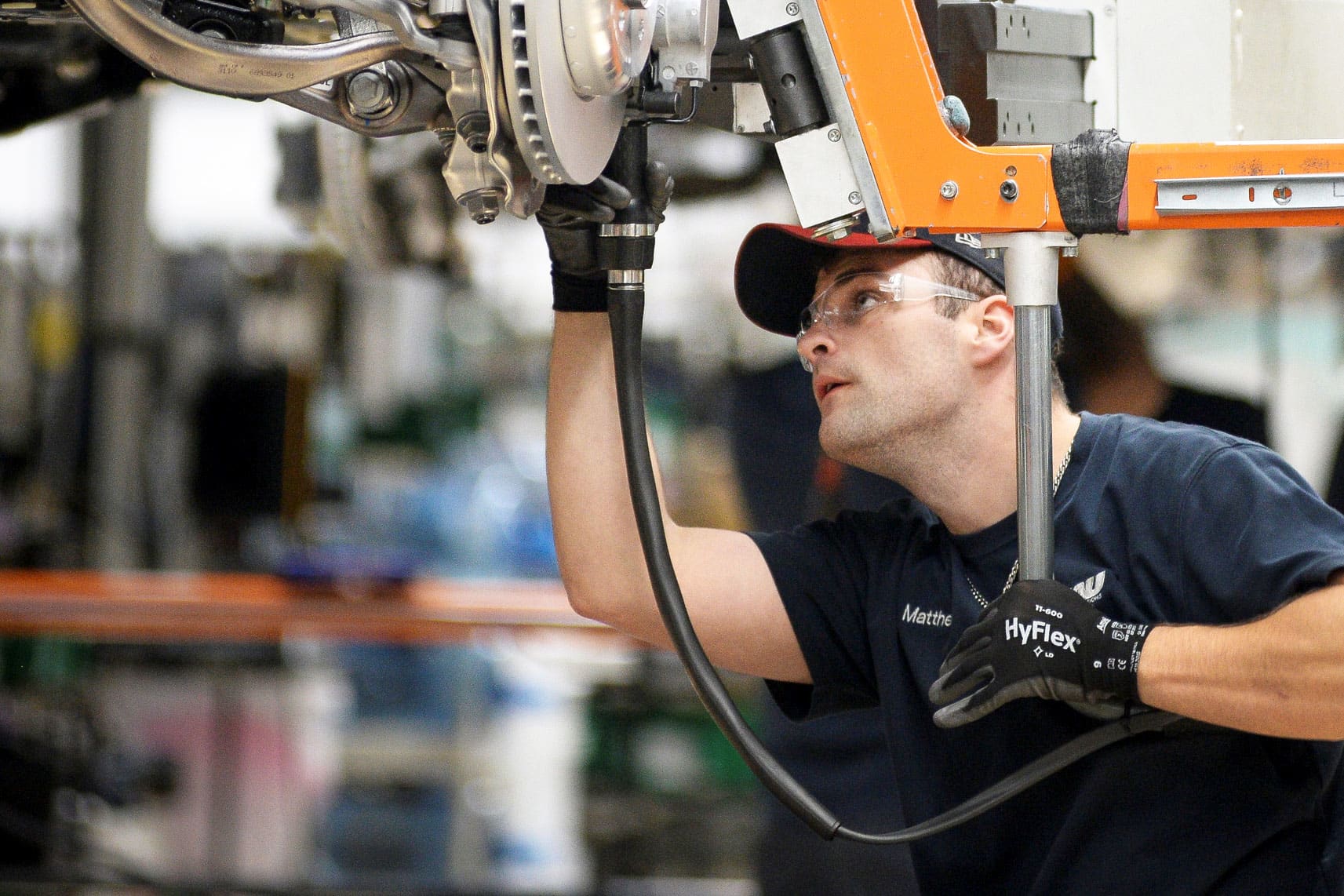
U.S. worker productivity fell by the most in nearly four years in the third quarter, the government confirmed, while growth in unit labor costs was not as robust as initially thought.
The Labor Department said on Tuesday nonfarm productivity, which measures hourly output per worker, decreased at a 0.2% annualized rate in the last quarter, the biggest drop since the fourth quarter of 2015.
Productivity was previously reported to have decreased at a 0.3% pace in the July-September quarter. A rebound in hours, driven by a surge in the volatile self-employed and unpaid family workers component, outpaced output in the third quarter.
Productivity grew at an unrevised 2.5% rate in the second quarter. Economists polled by Reuters had expected third-quarter productivity would be revised up to show it falling at a 0.1% rate.
The government last month revised up third-quarter gross domestic product growth to a 2.1% rate from a 1.9% pace.
Compared to the third quarter of 2018, productivity increased at a 1.5% rate, instead of the previously reported 1.4% pace. Tepid productivity suggests the economy is unlikely to achieve the Trump administration's goal of 3% annual growth.
Productivity increased at an average annual rate of 1.3% from 2007 to 2018, below its long-term rate of 2.1% from 1947 to 2018, indicating that the speed at which the economy can grow over a long period without igniting inflation has slowed.
Some economists blame soft productivity on a shortage of workers as well as the impact of rampant drug addiction in some parts of the country. Others also argue that low capital expenditure, which they say has resulted in a sharp drop in the capital-to-labor ratio, is holding down productivity.
There is also a belief that productivity is being inaccurately measured, especially on the information technology side. Federal Reserve Chairman Jerome Powell said in October the U.S. central bank was "carefully assessing the implications of possibly mismeasured productivity gains."
Fed officials were scheduled to begin a two-day policy meeting on Tuesday. The central bank is not expected to cut interest rates on Wednesday after reducing borrowing costs in October for the third time this year.
Hours worked rose at a revised 2.5% rate last quarter. That was up from the 2.4% pace estimated in November.
Soft productivity last quarter lifted labor costs, though the pace of increase was not as robust as previously estimated. Unit labor costs, the price of labor per single unit of output, increased at a 2.5% rate in the third quarter. They were previously reported to have advanced at a 3.6% rate.
Compared to the third quarter of 2018, labor costs grew at a 2.2% rate, rather than the previously estimated 3.1%.
Hourly compensation increased at a 2.3% rate in the third quarter, instead of the originally reported 3.3% pace. Hourly compensation rose at a 3.7% rate compared to the third quarter of 2018.
Last quarter's gains in unit labor costs and compensation are in line with other measures showing moderate wages gains, suggesting inflation will probably continue to run below the Fed's 2% target.
https://news.google.com/__i/rss/rd/articles/CBMiTGh0dHBzOi8vd3d3LmNuYmMuY29tLzIwMTkvMTIvMTAvdXMtcHJvZHVjdGl2aXR5LWFuZC1sYWJvci1jb3N0cy1xMy0yMDE5Lmh0bWzSAVBodHRwczovL3d3dy5jbmJjLmNvbS9hbXAvMjAxOS8xMi8xMC91cy1wcm9kdWN0aXZpdHktYW5kLWxhYm9yLWNvc3RzLXEzLTIwMTkuaHRtbA?oc=5
2019-12-10 13:30:00Z
CAIiEAV80LS4pyyG7BQTMR_F64EqGQgEKhAIACoHCAow2Nb3CjDivdcCMIvwngY
Bagikan Berita Ini

















0 Response to "US productivity was weak in the third quarter, while labor costs were revised lower - CNBC"
Post a Comment